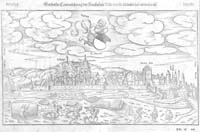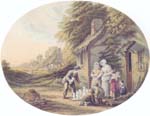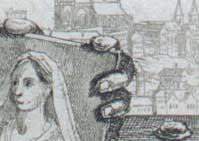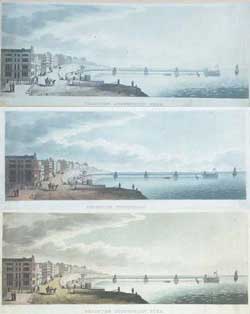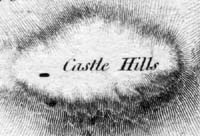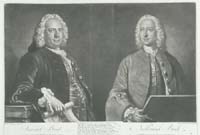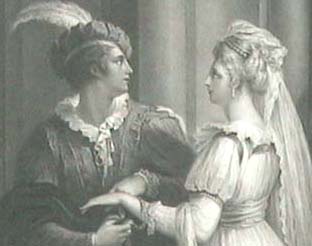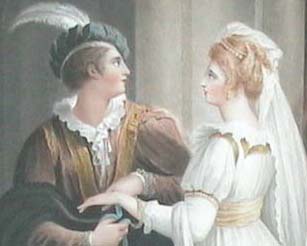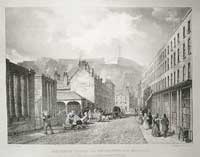|
|
There is a mystique surrounding the ways that old prints were made, although the main printing techniques are quite simple operations. These notes explain the methods, and, we hope, help you to determine the way that any early print was made. Such an understanding will give greater enjoyment of the artistry that was required to make them. With the notes, a date span is given which are the dates that the method flourished. There are, of course, prints made by these methods after the final date noted, when artists rather than commercial printers extended the technique's lifespan. Also mentioned are the principal uses of each method, and these are the subjects which were most suited to the method. These notes are deliberately brief, outlining the standard printing methods used during the period, providing fundamental information.
"Printing", for the purposes of this article, is the transfer of ink from a prepared medium onto paper in a way that an image can be reproduced repeatedly. These media were usually flat, so there are three materials used in the making of the plates and blocks that printed pictures: wood, hard and fine grained
There were three ways in which the materials were used. The wood and metals required some sort of engraving, cutting into the material in various ways to produce an image which could then be transferred onto paper with a printing press. These methods are either 'relief' or 'intaglio.' Printing from a stone required a flat surface, without any incisions, and is 'lithography.' |
The opposite of relief. The metal plate was cut into, either by using special tools or with the controlled use of acid. The incisions eventually produce the detail in the print. Explaining the last part first, when the engraved plate is ready to be printed, the whole surface is covered with ink, carefully rubbed into all the incisions, and then the surface is wiped perfectly clean, leaving ink in the incisions. What creates various tones on the paper is that the engraver varies the depths of the incisions, the deeper the incision the more ink will be in it, and the blacker will be the detail on the print. The finest detail will show as nothing more than a finger print on the plate. Assuming that the paper has not been trimmed, all intaglio prints will have a 'plate mark,' an indentation in the paper around the outside the image, caused by the pressure exerted on the plate by the printing press. The pressure meant that the plates were literally flattened with use; prints show loss of fine detail after a small number had been printed. The best etchings and drypoints were printed in numbers of only about fifty. It was definitely not possible to produce prints in unlimited numbers.
Span: the earliest etching is dated 1513. Flourished from 1550 to 1700. Revived in the middle of the 19th century. most subjects. SOFT GROUND ETCHING is a variant. A softer resin was used to cover the plate and then a thin sheet of paper was laid over it. Using a soft pencil, the etcher drew the design onto the paper, and where the pencil touched the paper, the resin adhered to it. When completed, the etcher peeled the paper away from the plate, lifting the resin which had adhered to the paper with it, thus exposing the metal. The plate was subjected to acid like normal etching. The resulting prints look similar to soft pencil drawings. DRYPOINT was a way of adding to an etched plate without the use of acid, the etcher using a needle directly onto the copper to add further detail. Unlike engraving tools, which cut the metal cleanly, the needle scraped the plate, leaving a residue of metal at the side of the line, known as 'burr.' The burr held more ink during printing, giving a blacker and richer effect to the print than with normal etching. The burr wore away from the plate after very few impressions had been taken. Span: as etching, but especially used in the late 19th century. Mainly used for portraits and still life.
Unlike wood-cuts, additions could easily be made to plate simply by
adding necessary detail. Alterations could be made by hammering
the plate from the back, smoothing the surface and re-engraving.
|
|
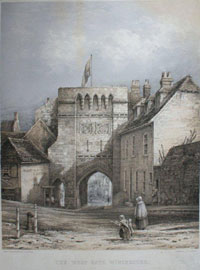 From about 1840, printers began to use an
extra stone to add tone colour to the print, blue, yellow or
brown being commonly used. These are known as 'tinted lithographs,'
which does not mean they are fully coloured. From about 1840, printers began to use an
extra stone to add tone colour to the print, blue, yellow or
brown being commonly used. These are known as 'tinted lithographs,'
which does not mean they are fully coloured. Span: earliest use was about 1790; flourished from 1820. Suited all subjects except maps. (see below) |
|
TRANSFER LITHOGRAPHS are a mixture of engraving and lithography. Because
the fine definition of engraving could not be achieved with pure lithography,
an engraved plate was first used and a print made from it on a special
transfer paper. While the ink was still wet, the print was laid
over the stone, transferring the ink onto the stone. The stone
was then used to print in the normal way. Apart from the benefit
of fine definition, it was easier and cheaper to print from a stone. The
prints are sometimes difficult to detect from engravings. There
will not be a plate mark. The system had a particular advantage
to map publishers. The metal plate could be stored safely, additions
made to it as required, and a single print made to transfer to stone,
from which a large number could be made without any visible sign of
wear to the metal plate. Used from about 1860. |
This article has been expanded into book form
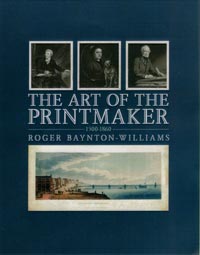 THE ART OF THE PRINTMAKER 1500-1860
by Roger Baynotn-Williams |
Back to Top

